Sacred journeys through India’s spiritual heartlands, where every step deepens reflection and every silence carries ancient wisdom
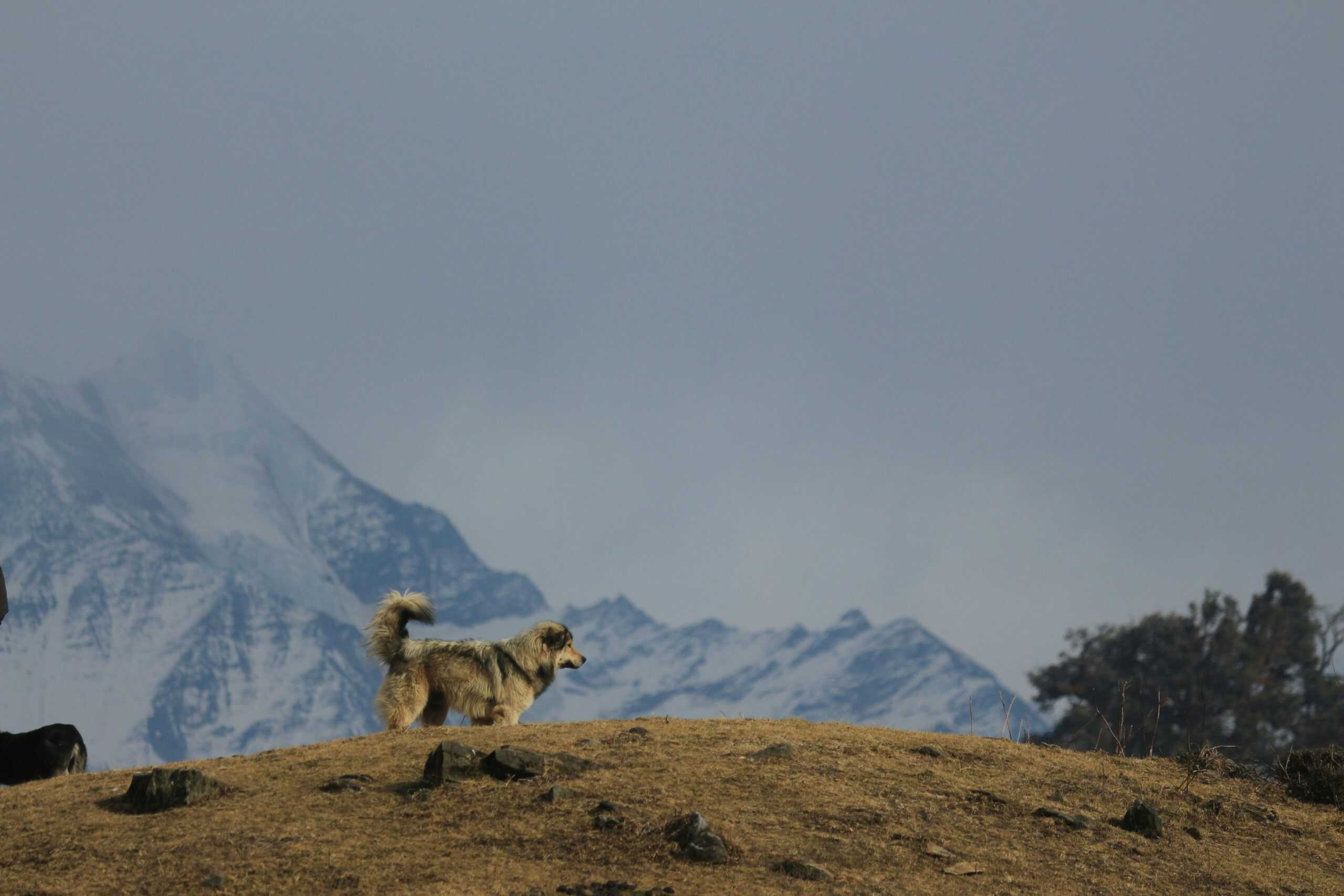
India’s spiritual landscape is vast, ancient, and deeply woven into its geography. Every mountain, river, and temple seems to pulse with stories of devotion, penance, and enlightenment. Spiritual travel in India is an immersive experience that engages the body, challenges the mind, and stirs the soul.
These journeys are not typical holidays. They are transformative adventures, rich in myth, landscape, ritual, and silence. Walking step by step, breath by breath, becomes a sacred act, es pecially when traversing the Himalayas or the forests, plains, and river valleys that have drawn seekers for millennia. Each trail has witnessed sages in meditation, pilgrims chanting prayers, and nature echoing with divine energy.
This feature explores some of the country’s most revered spiritual treks. The routes described here are not confined to mountain peaks; they stretch across plains, forests, deserts, and valleys. Each path offers a different encounter with the sacred. Both experienced trekkers and spiritual seekers new to the trail will find these journeys invite purposeful walking, deep reflection, and the discovery of what lies within.
Top Spiritual Treks in India
Panch Kedar Trek, Uttarakhand: A Pilgrimage into Mythology and Redemption
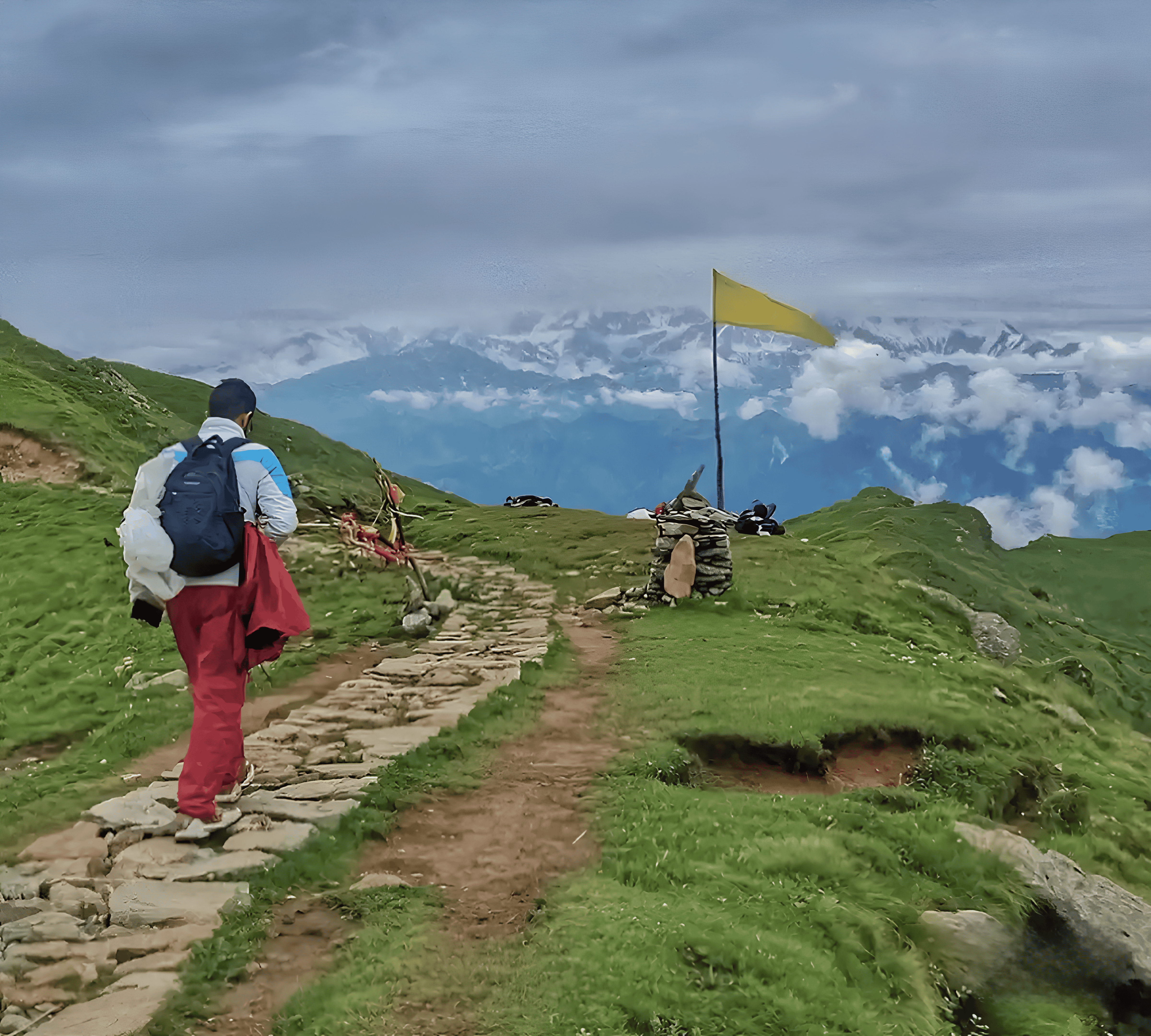
The Panch Kedar Trek is a legendary pilgrimage connecting five ancient Shiva temples scattered across the Garhwal Himalayas: Kedarnath, Tungnath, Rudranath, Madhyamaheshwar, and Kalpeshwar. Each temple marks the location where a different part of Lord Shiva’s body surfaced after he assumed the form of a bull to elude the Pandavas.
Mythological Significance:
The story behind Panch Kedar is as profound as it is symbolic. According to legend, after the carnage of the Kurukshetra war, the Pandavas, overwhelmed by guilt, sought Lord Shiva’s forgiveness. The god, unwilling to grant pardon easily, disguised himself as a bull and vanished into the earth. Parts of his body re-emerged in five distinct locations in the Garhwal Himalayas-each now enshrined in the form of a temple. His hump appeared in Kedarnath, arms in Tungnath, face in Rudranath, navel in Madhyamaheshwar, and hair in Kalpeshwar.
This dispersal of divinity symbolises the omnipresence of God, manifesting wherever there is devotion and endurance. The trek becomes a form of tapasya (penance), retracing the Pandavas’ steps in search of forgiveness and union with the divine.
Trek Experience and Details:
- Distance: Approximately 95 km, depending on route variations
- Duration: 11–12 days
- Elevation Range: From 2,200 metres to over 3,800 metres
- Difficulty: Moderate to challenging due to uneven terrain and steep ascents
- Best Season: May to October (except during peak monsoon or early winter)
The trail leads through dense oak and rhododendron forests, high alpine meadows, snow-blanketed slopes, and remote Garhwali villages. Each temple has its unique architectural character-some built in stone with pagoda roofs, others hewn into mountain rock. Along the route, local traditions remain strong and spiritual energy is palpable. At Tungnath, believed to be the world’s highest Shiva temple, the air feels thin but charged with ancient prayers. In Rudranath, nestled in a meadow surrounded by lofty cliffs, mist rolls in like a veil between worlds. Pilgrims and sadhus still walk this trail, often barefoot, chanting Shiva mantras, carrying with them little more than faith.
Spiritual Experience:
The Panch Kedar Trek is physically demanding, and this very challenge becomes a vehicle for spiritual growth. Pilgrims often speak of a deepening silence, both around and within, as the days pass. The journey strips away mental clutter and replaces it with a raw sense of presence. Each temple visit feels earned-your body aches, your breath is heavy, but your spirit is lifted. The mountains do not shout; they murmur sacred truths to those who are still enough to listen. Those who undertake the full circuit describe the trek as a transformative rite of passage.
Adi Kailash Trek (Chhota Kailash) and Om Parvat, Uttarakhand: The Sacred Peaks of the Kumaon Himalayas
Far in the Kumaon Himalayas, near the Indo-Tibetan border, lies Adi Kailash-the “original” Kailash. Also known as Chhota Kailash, it mirrors the famed Mount Kailash in Tibet and is revered by devotees as an equally potent abode of Lord Shiva. In these remote valleys and high ridges stands another holy spectacle: Om Parvat, a natural formation of perpetual snow that appears in the perfect shape of the sacred Om (ॐ) symbol on the mountain face. Together, these wonders form one of the most mystical and less-trodden spiritual treks in India.
Mythological Importance:
Adi Kailash is believed to have been Lord Shiva’s earliest dwelling before he settled at Mount Kailash in Tibet. Ancient scriptures refer to it as a site of divine romance and spiritual austerity. Local lore tells of Shiva and Parvati resting here on their celestial journey to wed in the Himalayas. The mountain is also said to have witnessed the cosmic dance of Shiva-the Tandava-the rhythm of creation and destruction.
Om Parvat evokes awe due to its religious symbolism and natural mystery. No human hand carved it, yet the eternal symbol of creation-ॐ-is etched in snow on a towering black rock. Many believe this to be a direct manifestation of the cosmic vibration.
Trek Experience and Details:
- Duration: 7–9 days (excluding travel days)
- Trek Length: Around 80–90 km (round trip depending on starting point)
- Altitude: Up to 5,000 metres
- Difficulty Level: Moderate, with several high-altitude crossings and remote terrain
- Best Season: June to September
The trek begins near Dharchula, a border town in Uttarakhand, and proceeds via villages such as Gunji, Nabi, and Kuti. These names appear in the Puranas and are believed to be part of the route taken by the Pandavas during their exile. The journey takes you through pine forests, cascading rivers, and high-altitude grasslands. Villages along the trail are inhabited by the Rang tribe, who have preserved their unique culture, language, and rituals for centuries.
This trail remains rugged, wild, and relatively untouched. Accommodation is basic, and facilities minimal, but the authenticity of the experience is unparalleled. Each morning feels like a new beginning; each evening closes with the kind of silence found only in the lap of the divine. The final approach to Adi Kailash Base Camp reveals the sacred mountain shrouded in prayer flags, its grey slopes glistening under the Himalayan sun. The sight of Om Parvat, often partially hidden behind clouds, is described as “jaw-dropping,” and the first glimpse usually brings tears to the eyes of believers.
Cultural Significance and Local Rituals:
The journey is a cultural immersion. Villagers often welcome pilgrims with traditional songs and butter tea. Some shrines on the route are tiny stone cairns adorned with bells, tridents, and red flags fluttering in the mountain winds.
Each year, a Kailash Yatra is organised by the Kumaon Mandal Vikas Nigam (KMVN), supported by the Indian government. Due to its proximity to the international border, permissions are required, and army presence is constant. This security adds to the sanctity, making it feel like a pilgrimage protected by both celestial and earthly forces.
Spiritual Experience:
A rare stillness pervades this trek, encouraging deep listening-to the wind and to the inner voice often drowned out by life’s chaos. The remoteness, the raw beauty, and the reverence in the air create a setting ideal for introspection. Trekking to Adi Kailash is about being in the presence of Shiva’s essence-unadorned, ascetic, and all-encompassing. People return with the sense that they have walked into a myth as much as a mountain range.
Pilgrims often sit before Om Parvat in silent meditation, gazing at the cosmic symbol carved by nature itself. Many speak of feeling vibrations through the earth beneath them, of a sense of timelessness that makes the trek unforgettable. Adi Kailash has a way of revealing truths that were previously hidden from view.
Nanda Devi East Base Camp Trek, Uttarakhand
A Pilgrimage to the Living Goddess
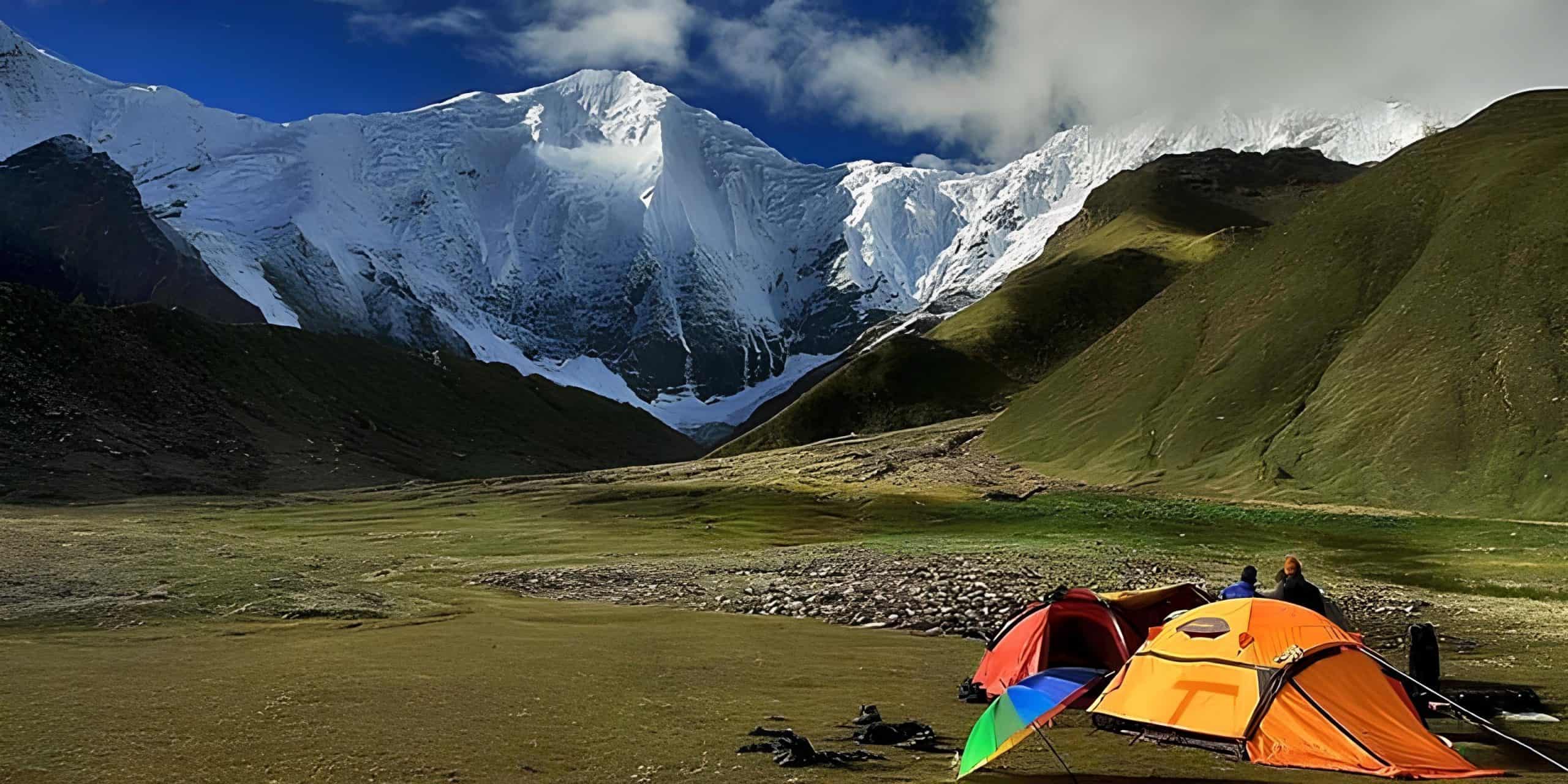
The name Nanda Devi refers to a living goddess, presiding over the mountains of Uttarakhand with fierce protection and gentle grace. The Nanda Devi East Base Camp Trek is a pilgrimage through devotion, folklore, and the indomitable power of the feminine divine.
Nanda Devi is the second-highest peak in India and one of the most revered. To the people of the Kumaon and Garhwal regions, she is a beloved daughter, a guardian queen who watches over their lives and harvests.
Spiritual Symbolism:
Nanda Devi is a form of Parvati, consort of Shiva, and represents both maternal care and formidable strength. Her mythology blends seamlessly with geography-villagers believe the peaks and passes are part of her divine form. The trek to her base camp is seen as approaching her throne room with offerings of effort, reverence, and surrender.
Every twelve years, the Nanda Devi Raj Jat Yatra, a major religious procession, circumambulates her sacred domain over three weeks, traversing remote villages and rugged mountains. Locals consider this trek a symbolic journey of accompanying the goddess on her return to her husband, Shiva. The spiritual aura that permeates this region is unique.
Trek Experience and Details:
- Duration: 6–8 days (ex-Base Camp from Munsiyari)
- Distance: Approx. 60–70 km round trip
- Altitude: Up to 4,000+ metres
- Difficulty: Moderate to challenging
- Best Season: May to June, and post-monsoon September to October
The trek usually begins at Munsiyari, a quiet hill town surrounded by the rolling Panchachuli ranges. The trail winds through dense rhododendron forests, river crossings, terraced fields, and traditional Kumaoni hamlets. Each village tells its own story of the goddess. Locals recount how her blessings protect cattle, ensure fertility of the soil, and guard the homes built under her gaze.
The trail passes through camps like Lilam, Bog Udiar, and Martoli, with their stone houses, woollen looms, and yak herders who follow ancestral rhythms. Trekkers eventually reach the East Base Camp near the Pachu Glacier, with the majestic twin peaks of Nanda Devi and Nanda Kot standing tall like celestial sentinels.
The landscapes here are alive with biodiversity. Himalayan monals, bharals (blue sheep), and, occasionally, signs of elusive snow leopards may be spotted. Yet, it is the vibrations of centuries of prayer that travellers often feel most strongly.
Cultural Interactions:
This trek offers a deeply human connection as well. Villagers, though few in number due to the remoteness, are warm and spiritually rooted. Their homes have prayer flags, pictures of Nanda Devi, and heirlooms from the Raj Jat pilgrimage. Many are musicians and storytellers-expect to hear local hymns dedicated to the goddess by firelight.
Spiritual Experience:
Standing before the silent majesty of Nanda Devi, wrapped in mist and legend, is profoundly humbling. The solitude of the trail, the steady ascent, and the chill in the air converge into a meditative stillness. Trekkers often describe the journey as one of softening-a letting go of daily rigidity. Here, the divine is found in relationships-with the land, the wind, the people, and with one’s own quieter self. The goddess does not speak, but you will feel heard. Her mountain is a place of quiet affirmations.
Hemkund Sahib Trek, Uttarakhand: The Highest Gurudwara and the Spirit of Seva
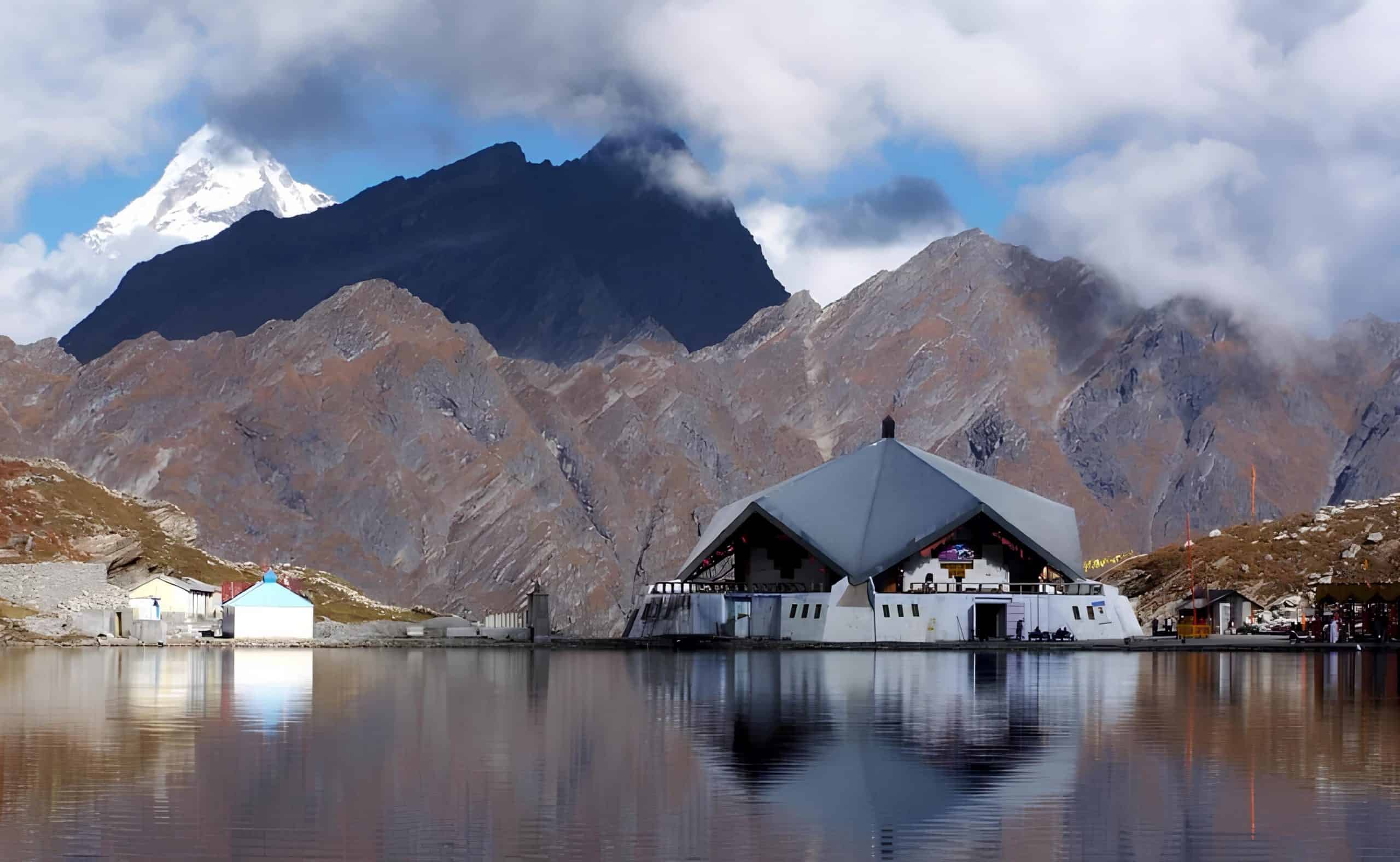
High in the Garhwal Himalayas, beside a glacial lake that mirrors the heavens, lies Hemkund Sahib-the world’s highest Gurudwara, perched at an altitude of 4,632 metres. This journey is one of devotion, discipline, and collective spirit. The name Hemkund, meaning “Lake of Snow,” speaks to both its physical beauty and the cool, cleansing clarity it imparts to the soul.
Hemkund Sahib is sacred to Sikhs as the site where Guru Gobind Singh, the tenth Guru, is believed to have meditated in a previous life. The Dasam Granth, a spiritual text attributed to the Guru, describes this place as “Hemkunt Parbat Sapat Sring,” a mountain adorned with seven peaks where he performed intense penance and attained oneness with the Divine.
The location’s remoteness and elevation mirror the heights of spiritual evolution. For believers, reaching Hemkund is like stepping into a page of divine history. The lake is pristine, icy, and still. Pilgrims traditionally take a dip in its waters before entering the Gurudwara-a test of both will and devotion. The freezing water shocks the body but electrifies the spirit.
Trek Experience and Details:
- Duration: 5–6 days (from Govindghat)
- Trek Route: Govindghat – Ghangaria – Hemkund Sahib
- Distance: Approx. 15 km one-way
- Altitude: 4,632 metres
- Difficulty: Moderate to strenuous (due to steep gradient and altitude)
- Best Season: June to early October
The journey begins at Govindghat, where pilgrims gather in the early morning. Mules and porters are available, though many choose to walk as a form of devotion. The first stop is Ghangaria, a small base village surrounded by pine trees and rushing streams. From there, the final 6 km climb to Hemkund is steep and challenging, especially given the thinning air.
Along the way, the sound of Waheguru chants, the kindness of fellow pilgrims offering glucose or warm encouragement, and the scent of blooming wildflowers fill the air-especially during the monsoon, when the adjoining Valley of Flowers bursts into life.
Community, Seva, and Sacred Songs:
The spirit of seva is central to this trek. At Ghangaria, a langar (community kitchen) serves hot meals to all visitors, regardless of background. Volunteers sweep the paths, distribute warm clothes, carry the elderly on makeshift palanquins, and wash utensils with a smile. The Gurudwara at Hemkund Sahib is a place of prayer, meditation, and remembrance of Guru Gobind Singh’s spiritual legacy. The trek symbolises devotion, perseverance, and spiritual awakening.
Spiritual Experience:
The collective energy of thousands of pilgrims, the selfless service, and the breathtaking setting create a sense of unity and upliftment. The journey is as much about the community as it is about personal devotion.
Source of Ganges Trek (Gaumukh Tapovan), Uttarakhand: Tracing the Divine River to Its Origin
Gaumukh, the glacier that gives birth to the sacred Ganges River, is a site of profound spiritual significance. The trek from Gangotri to Gaumukh and further to Tapovan allows pilgrims to witness the river’s divine origin.
The Ganges is central to Hindu spirituality, symbolising purity, life, and liberation. The trek is a meditative journey tracing the river’s source amid spectacular Himalayan scenery.
Trek Experience and Details:
- Duration: 6–7 days
- Difficulty: Moderate to challenging
- Best Season: May to October
The route passes through pine forests, rocky outcrops, and alpine meadows, with views of towering peaks such as Shivling and Bhagirathi. The sacred Gangotri temple marks the starting point, and rituals performed here are believed to cleanse the soul.
Spiritual Experience:
Walking alongside the river’s origin fosters a sense of connection with nature and divinity. Many trekkers pause for meditation by the glacier, feeling the presence of centuries of devotion in the air.
Other Notable Spiritual Treks Across India
Vaishno Devi Trek, Jammu & Kashmir
The Vaishno Devi trek is a 13 km pilgrimage to the cave shrine of Goddess Vaishno Devi, one of India’s most visited spiritual sites. The cave houses the trinity of goddesses-Maha Kali, Maha Lakshmi, and Maha Saraswati-making it a potent centre of Shakti worship.
- Duration: 1–2 days
- Difficulty: Easy to moderate
- Best Season: Year-round, except extreme winters
The trek is a journey of faith and surrender, with many pilgrims experiencing profound emotional and spiritual upliftment.
Amarnath Yatra, Jammu & Kashmir
The Amarnath cave is renowned for its naturally formed ice Shiva lingam. The trek is physically demanding but spiritually rewarding. The cave is believed to be where Lord Shiva revealed the secrets of immortality to Parvati.
- Duration: 3–5 days
- Difficulty: Moderate to strenuous
- Best Season: July to August
The yatra is a test of faith and endurance, culminating in a divine encounter with Shiva’s presence.
Valley of Flowers Trek, Uttarakhand
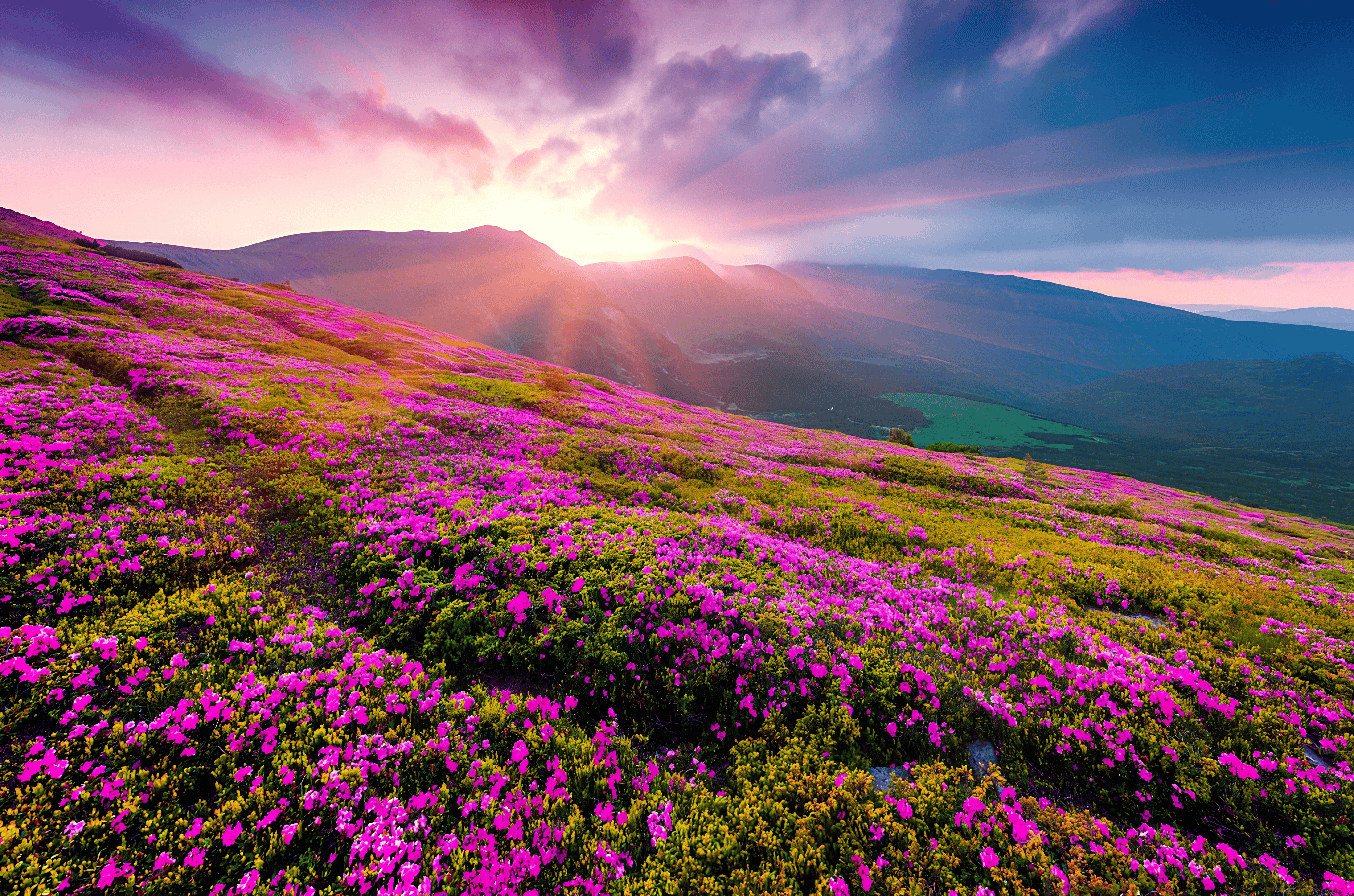
A UNESCO World Heritage site, the Valley of Flowers is famed for its vibrant alpine blooms and spiritual aura. The valley is considered sacred and is associated with various local myths and legends.
- Duration: 3–4 days
- Difficulty: Moderate
- Best Season: July to September
The peaceful environment is ideal for meditation and connecting with nature’s sacredness.
Prashar Lake Trek, Himachal Pradesh
Prashar Lake is a mystical lake surrounded by dense forests and snow-capped peaks, home to an ancient temple dedicated to Sage Parashar. The lake and temple are believed to have healing properties and spiritual tranquillity.
- Duration: 2–3 days
- Difficulty: Easy to moderate
- Best Season: April to November
The trek offers stunning views of the Dhauladhar range and peaceful surroundings for spiritual reflection.
Ladakh Monastery Trek, Ladakh
Ladakh’s spiritual treks take travellers through ancient Buddhist monasteries such as Hemis, Thiksey, and Diskit, offering cultural immersion and meditation opportunities. These monasteries are centres of Tibetan Buddhism, meditation, and monastic traditions.
- Duration: Varies (3–7 days)
- Difficulty: Moderate to challenging (due to altitude)
- Best Season: June to September
The treks allow for exploration of Buddhist rituals and teachings, set against the backdrop of high-altitude desert landscapes.
Spiritual Treks Beyond the Himalayas
Hampi, Karnataka
Hampi is a UNESCO World Heritage site known for the ruins of the Vijayanagara Empire, blending spirituality and architectural grandeur. Temples such as Virupaksha and Vithala are vibrant centres of worship and meditation, reflecting the fusion of devotion and art.
Walking through Hampi’s ruins is a spiritual journey through time, inspiring awe and contemplation.
Puri and Jagannath Temple, Odisha
Puri is one of the Char Dham pilgrimage sites and is renowned for the Rath Yatra festival. The Jagannath Temple is dedicated to Lord Jagannath (Krishna), and the town’s spiritual atmosphere is enhanced by its coastal serenity.
Pilgrims experience vibrant rituals and deep devotion, connecting with centuries-old traditions.
Bodh Gaya, Bihar
Bodh Gaya is where Buddha attained enlightenment under the Bodhi tree. It is the most important Buddhist pilgrimage site, hosting numerous monasteries and meditation centres.
Visitors engage in meditation, teachings, and spiritual learning in a serene atmosphere.
Practical Tips for Spiritual Trekkers in India
- Best Seasons: Himalayan treks are best from May to October, avoiding monsoon and harsh winters. Vaishno Devi and Bodh Gaya are accessible year-round.
- Physical Preparation: Build stamina through cardio, strength training, and acclimatise gradually to altitude.
- Cultural Etiquette: Dress modestly, respect local customs, maintain silence in sacred areas, and seek permission before photography.
- Packing Essentials: Layered clothing, trekking boots, water purification tablets, first aid kit, spiritual items (prayer beads, incense), and reusable water bottles.
- Local Guides: Hiring local guides enriches the experience, supports communities, and ensures safety.
The Transformative Power of Spiritual Treks

Spiritual trekking is a journey inward as much as outward. The physical challenges mirror inner struggles, while moments of solitude in nature foster mindfulness and clarity. Many pilgrims report profound personal growth, renewed faith, and a sense of universal connection.
These treks offer an opportunity to disconnect from the noise of modern life and tune into the rhythms of nature and spirit. Silent prayers at a mountain temple, rhythmic footsteps on a sacred path-every moment becomes a meditation, every breath a prayer.
When the Path Leads to the Self
India’s spiritual treks are sacred journeys that invite the curious soul to explore the depths of faith, nature, and self. From the ancient Shiva temples of the Garhwal Himalayas to the Buddhist monasteries of Ladakh, and the historic temples of the south, each trek offers a unique path to enlightenment and peace.
For seekers ready to embark on a journey of transformation, these treks promise breathtaking landscapes and timeless spiritual wisdom. Step onto these sacred paths and allow the mountains, rivers, and temples to guide you towards your own inner awakening.
Read more – Latest



